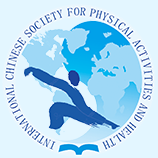Document Type
Abstract
Publication Date
2-2024
Abstract
Purpose: Outdoor physical activities (OPA) can not only improve the physical fitness and health of autistic preschool children, but also provide an indispensable opportunity for their social learning and interaction. However, parents’ intentions of providing OPA for their autistic children are complex due to reasons such as potential risk. Theory of Planned Behavior(TPB)has conceptualized that attitude (AT), subjective norms (SN), and perceived behavioral control (PBC) are influential factors of behavioral intention. Perceived risk and perceived usefulness are suggested to associate with one’s intention, therefore, the purpose of this study was to test an extended TPB model on parent’s intention of providing OPA among parents of autistic children. Methods: This was a cross-sectional study. A convenient sample of parents of 301 autistic preschoolers (mean age = 3.45±1.10 years old; boys=219; girls = 68) were recruited. Parents reported to questionnaires assessing their AT, SN, PBC, and intention (Ajzen, 1991; Yang, 2017) as well as perceived risk and perceived usefulness of providing OPA for their autistic children (Davis et al., 1989; Yu, 2016). Structural Equation Modeling (SEM) using SmartPLS software was employed to investigate the extended TPB model by including perceived risk and perceived usefulness (exogenous variables) with AT, SN, PBC to synergistically predict intention (endogenous variable). Results: The results revealed that autistic preschooler parents’ perceived usefulness (p < 0.01, f2= 0.087)had a significant and positive prediction on intention in addition to the significant contributions from AT (p < 0.01, f2=0.053), SN (p < 0.01, f2=0.047), and PBC (p < 0.01, f2=0.060). However, perceived risk (p < 0.01, f2= 0.070) had a significant and negative prediction on intention. Besides, perceived usefulness (p < 0.01, f2= 0.108) was positively correlated with AT and AT partially mediated the association between perceived usefulness and intention (Variance Accounted For= 23.2%). In general, perceived usefulness, PBC, AT, SN and perceived risk had a high explanatory power to intention (R2=0.536). Conclusion: The extended TPB model demonstrated to be a useful framework to explain autistic preschooler parents’ intention of providing OPA for their autistic children. Perceived risk and perceived usefulness are critical to parents’ intention in addition to PBC, AT and SN, which should also be the targets of intervention in practice. This finding also suggests practitioners may help parents’ understand the usefulness of OPA to help autistic preschoolers’ parents form positive attitude of OPA, then boosting their intention to engage their autistic children in OPA.
DOI
https://doi.org/10.18122/ijpah.3.1.24.boisestate
Recommended Citation
Yang, Hongchang and Zhang, Xiaoxia
(2024)
"A84: Factors Influencing Parents' Intention to Involve Autistic Preschoolers in Outdoor Physical Activities,"
International Journal of Physical Activity and Health: Vol. 3:
Iss.
1, Article 24.
DOI: https://doi.org/10.18122/ijpah.3.1.24.boisestate
Available at:
https://scholarworks.boisestate.edu/ijpah/vol3/iss1/24
Included in
Exercise Science Commons, Health and Physical Education Commons, Public Health Commons, Sports Studies Commons



